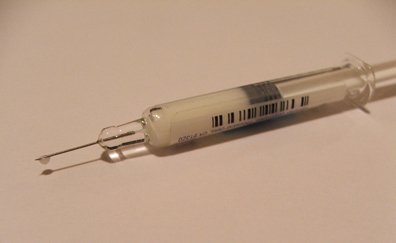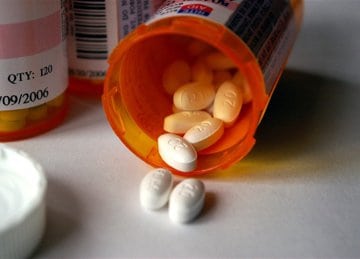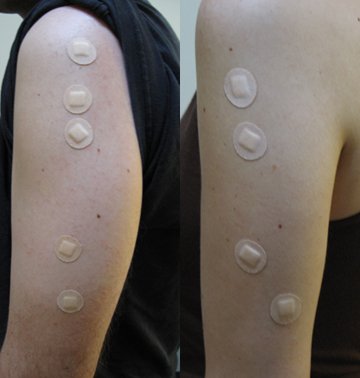
We had several shots to prevent us from getting ill while travelling. Photo by ronnieb of morgueFile.
*UPDATED 6 April 2014*
Our 2011 travels are taking us to South America so John and I made the requisite trip to the doctor for our travel vaccinations last week. My regular doctor recommended her colleague for the job. So we headed off to his practice in Richmond for our shots. I had a rough idea of which ones we would need from guidebooks and online research, but I quickly learned that it’s best to speak to a doctor about what you actually need.
After a discussion about where we were going and our plans for the future (yes, we are planning on starting a family in the next few years; no, we won’t be doing any self-guided trekking for days at a time far from civilization), we took turns getting stuck. Neither of us has ever been vaccinated against Yellow Fever, which is the only mandatory vaccination we would need. While not the most pleasant experience, I wouldn’t say that the shots hurt too much.
[Please note that the following information was given to us based on our trip and personal requirements, and is not to be taken as medical advice of any kind. We recommend finding a good doctor who has undertaken training in travel medicine to advise you on what health preparation you need for your particular travels.]Yellow Fever was the first vaccination we received because you have to remain at the doctor’s office for at least half an hour afterwards in case you experience an allergic reaction (this is very rare). We were informed of the odds of this happening and also what to look out for over the next 10 days. If we showed any signs of a bad reaction, such as generalised rash, swelling of the throat, marked coughing, wheezing, difficulty breathing and/or significant facial swelling, we were told to go immediately to the emergency room. We were given some cards to place in our wallets so others would know what was happening in case of a reaction.
We were also vaccinated against hepatitis A, tetanus, diptheria and whooping cough, and we received typhoid and measles-mumps-rubella (MMR) vaccines as well. For typhoid, we were given the option of taking either pills or the jab – the pills are effective for longer than the injection, however they can irritate your stomach. The MMR booster is also recommended for women planning to have a child. John and I had both been vaccinated against hepatitis B earlier in our lives but if a traveller has not, he would be advised to have this vaccination before taking a trip like ours.
We passed on both the rabies vaccination and malaria pills, since we are only going to Puerto Maldonado and not further into the Amazon. The rabies vaccination is expensive and requires multiple shots, and apparently you have about 72 hours to receive treatment (consisting of rabies immune globulin and rabies vaccines) if you are bitten by an animal. This vaccine would be recommended, however, for people trekking in remote areas and for adventure travellers who do a lot of remote excursions for long periods of time.
***Be advised that if you are considering taking Mefloquine as an anti-malarial drug you could experience very severe side effects. I spoke to a woman who had her life ruined by this drug after a trip to India. Be very careful about all drugs that you are advised (even if it is by a doctor that you trust) and look into the side effects. This is also very important for fluoroquinolone antibiotics, which I ended up with lasting neuropathy from…more on that below***
And the fun wasn’t over after that. The doctor told us how to prevent altitude sickness (drink lots and lots and lots of water was his primary tip). We also discussed anti-mosquito measures. The advice is to use 30 to 40% DEET repellent and to apply it every two hours when spending time in mosquito infested areas.
The final educational portion of our visit was a lesson on travellers diarrhoea. We’ve all been there. You eat or drink the wrong thing and then uh oh. We are prepared for anything now, having received a diarrhoeal illness kit, which includes Stemetil tablets for nausea, Fasigyn (Tinidazole) for Giardia (a drug that can have side effects, see my warning above) and Amoebic dysentery, Noroxin (Norfloxacin) ***I don’t recommend anyone to take this or any other fluoroquinolone antibiotics as they are only to be used for severe, life-threatening emergencies. I had a drug injury from it.***, Gastro-Stop and Gastrolyte. We also received a very thorough and handy flowchart and instructions to help us remember what to take when. Some handy information on travellers diarrhoea can be found here.
We were given our Yellow Fever vaccination booklets, which we will keep with our passports in the event we are asked to prove that we’ve been vaccinated against the disease. And then it was time to pay for everything.
A$845.
Ouch.
This amount did include the doctor’s consultation fees. Everyone told us that travel vaccinations are expensive so we were prepared, but it’s still shockingly high. The good news is that most of the vaccines are good for 10 years or for life. I’ve heard that it can be cheaper to get vaccinations overseas but we didn’t want to be bothered with this at our destinations.

Don’t forget to stock up on your meds and get a doctor’s letter for them before you travel overseas. Photo by earl53 of morgueFile.
We had sore arms the first night after our shots; it was difficult to avoid bumping each other on the couch. It was also challenging trying to avoid laying on the affected arms while falling asleep. The next day we woke up with flu-like symptoms and our arms were much sorer. I could barely lift my coffee cup without feeling pain. It wasn’t terrible, however, and the flu symptoms were nothing like the real flu. We took some ibuprofen and hung out inside that day. The ibuprofen helped. On day three John’s arm barely hurt, though mine was still quite sore. I didn’t feel flu-ish anymore, either. Our arm soreness slowly eased off over the next four days – today I can just barely feel pain where I received the injections. During the week, we each had a swollen lymph node on the side of the body where we received most of the jabs.
Aside from stocking up on needed prescription medication and taking out comprehensive travel insurance, we’re pretty much finished with our pre-travel health preparations. I made sure to get a doctor’s letter for all of the antibiotics and other medication we would be taking with us as well (be sure to declare your prescriptions when going through customs, especially in countries that are nit-picky about this like Australia). We’ll take some first-aid items with us, though I will admit that we aren’t planning to take an actual first-aid kit due to space – it has been recommended, however. If only there was a shot for the impatience we’re feeling: with seven weeks to go until we leave, the anticipation is getting tiresome.
Resources for information on travel vaccinations:
The Travel Doctor
World Health Organization (WHO)
Immunization Action Coalition
What pre-travel health precautions did you take? We’d love to hear about your thoughts and experiences below.

